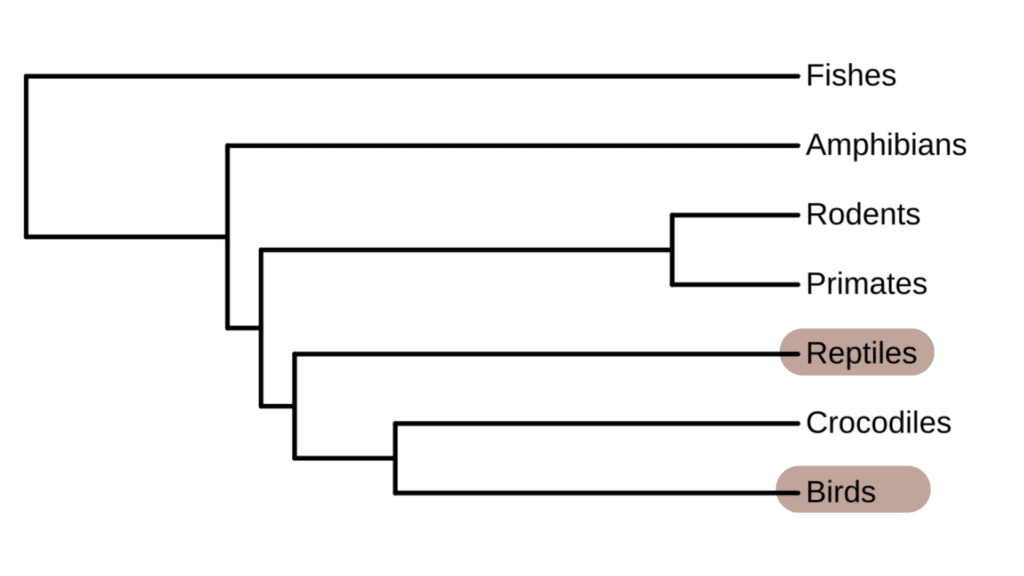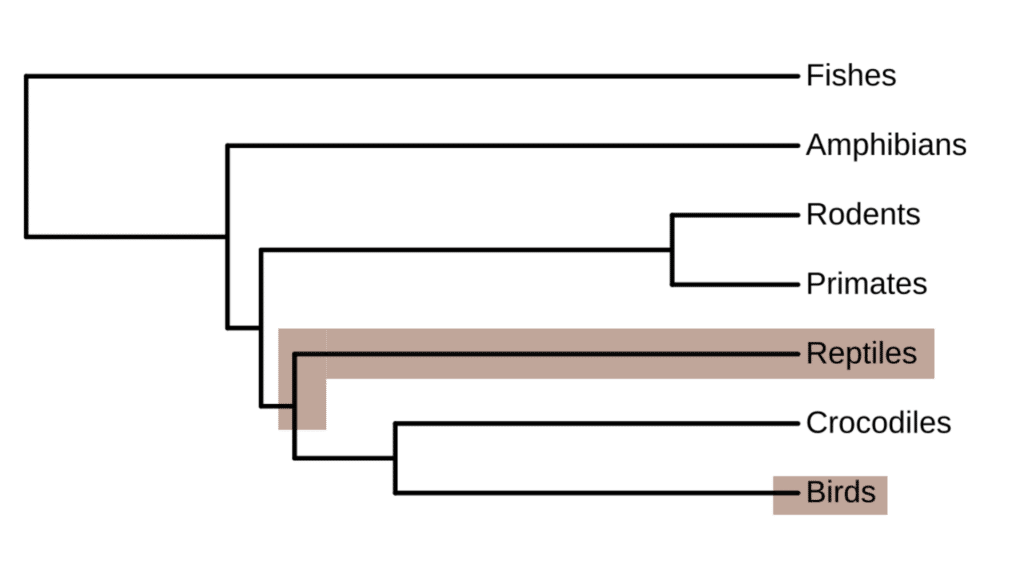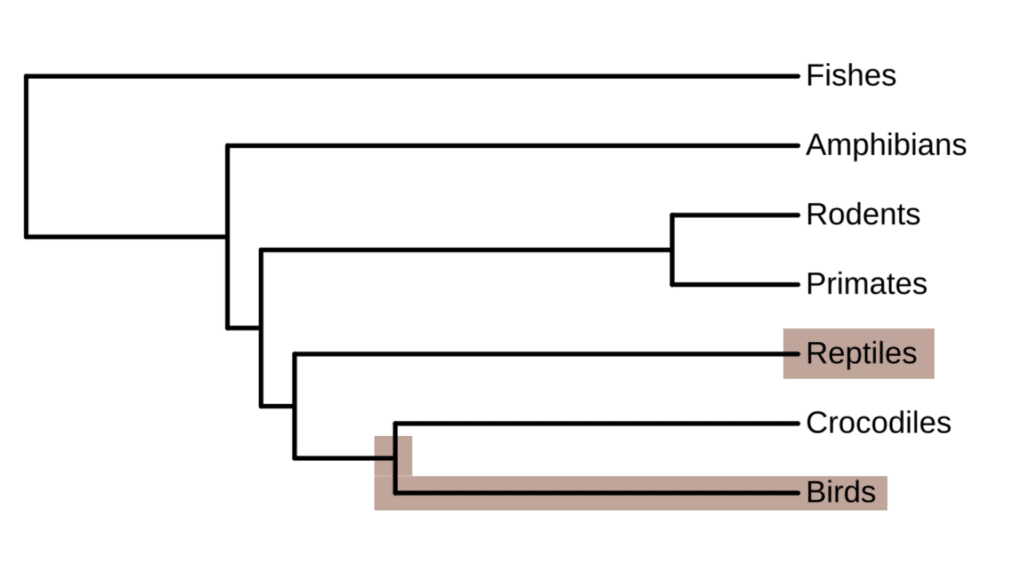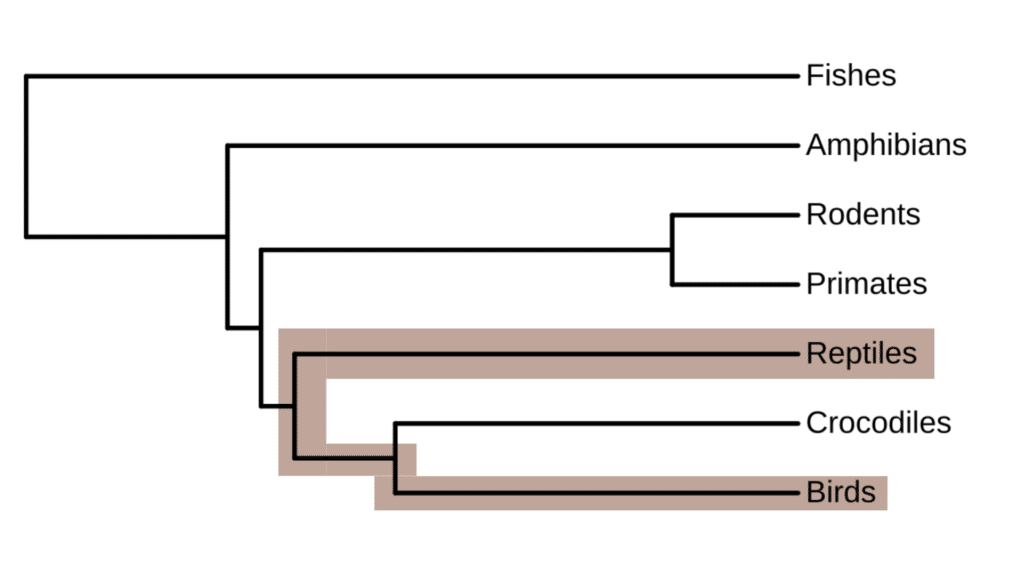Issues with Polyphyly and How they are used
At some level, polyphyletic groups are arbitrary. You’ll find in your studies, that many polyphyletic groups exclude ancestors or their descendants with little justification. Much of that is due to the imprecise nature of polyphyletic groups. If it can just be any group of tips and not their ancestors, there exists numerous polyphyletic groups for nearly any tree and any combination of tips.
Lets expand the issue of polyphyletic groups by asking a simple question. Given the provided phylogeny, are reptiles and birds polyphyletic?

As we are only provided the tip level information, we have no way to determine what common ancestors would be included in the group. Lets create every possible grouping of common ancestors that includes the reptiles and birds and see if we can answer the question.
The above phylogeny already provides a polyphyletic group of the reptiles and birds, including none of the common ancestors. We can also create a group that includes the most recent ancestor to reptiles as shown in the below phylogeny.

We can also create a grouping, that only includes the most recent ancestor to the birds as shown in the below phylogeny.

But, what happens if we include both the most recent ancestor to the birds, and the most recent ancestor to the reptiles?

This is now a paraphyletic group that excludes the crocodilians!
This represents a critical flaw in the question “Are birds and reptiles polyphyletic?”. The answer depends on what internal nodes we choose to include! The question does not provide enough information to make a determination on poly-, para-, or monophyletic grouping. The only thing you can be sure of when asked that question is if a group is monophyletic or not monophyletic!
But does this mean polyphyletic groups are useless? Not at all.
While not useful for placing organisms into groups according to shared evolutionary history, detecting the pattern of polyphyly can lead to interesting questions. For example, a pattern of polyphyly may represent convergent evolution! A polyphyletic group of winged organisms, would include birds, bats, and bugs. We could then ask questions of how flight independently evolved within each group.
However, the primary use for polyphyletic groups is when we are grouping organisms according to shared ecology or morphology.
A great example would be Algae. Algae is an informal term for photosynthetic eukaryotes that primarily live in water. This definition captures unicellular organisms such as diatoms all the way to multicellular giant kelp. In fact, the first algae appeared on earth over a Billion years ago. However, photosynthesis has evolved independently multiple times since! This is another example of convergent evolution.
Polyphyletic organisms often perform similar ecosystem roles, have similar physiologies, or have defining characteristics that shared between them. Even if they do not share a common ancestor exhibiting those traits. When we study, interact with, or communicate to others about Algae, we know that we are referring to groups of photosynthetic eukaryotes that primarily live in water. And by all accounts, Algae is much easier to say than photosynthetic eukaryotes that primarily live in water!

